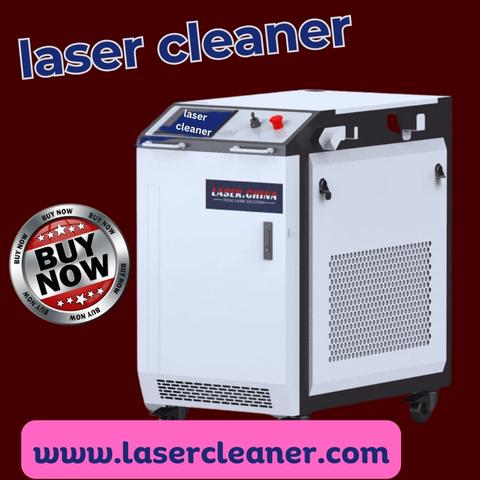Laser Cleaner – The Modern Industrial Solution for Efficient Surface Preparation and Maintenance

In today’s fast-paced manufacturing and restoration industries, the laser cleaner stands as one of the most advanced and reliable tools for surface treatment. It has transformed the way industries approach cleaning, preparation, and maintenance of metal, stone, and composite materials. Unlike traditional cleaning methods that rely on chemicals, abrasives, or manual scrubbing, laser technology provides a contact-free, precise, and efficient process that removes rust, oil, paint, and contaminants with exceptional accuracy.
The laser cleaner operates on a simple yet powerful principle—using high-energy laser beams to target and vaporize unwanted material layers without harming the base surface. This capability makes it a go-to technology across manufacturing, automotive, aerospace, electronics, energy, and even cultural heritage restoration. The shift toward laser cleaning is driven by efficiency, precision, and the demand for sustainability in industrial processes.
Understanding the Working Principle
At the heart of the laser cleaner lies the concept of laser ablation. When the laser beam strikes the surface, the energy density is absorbed by the unwanted layer—be it rust, paint, or oxide—causing it to evaporate or sublimate instantly. Since the underlying material reflects most of the laser energy, it remains intact and unharmed.
This process allows operators to clean complex shapes, detailed engravings, or sensitive surfaces with full control. The cleaning depth can be adjusted by controlling parameters such as laser power, pulse frequency, beam size, and scan speed. The technology is both safe and consistent, ensuring repeatable results even in demanding production environments.
Applications Across Industries
The laser cleaner is a multi-sector tool with a wide range of industrial applications:
-
Metal Surface Preparation – Before welding, coating, or bonding, metals must be completely clean. Laser cleaning efficiently removes oxides, rust, and grease, creating a perfectly prepared surface for further processing.
-
Rust and Paint Removal – In maintenance or restoration work, removing corrosion or paint layers without damaging the underlying metal is critical. Laser cleaners achieve this with precision, making them valuable in shipyards, railways, and automotive workshops.
-
Cultural Heritage and Art Restoration – Stone monuments, sculptures, and historical artifacts often need careful cleaning. The laser cleaner provides controlled cleaning, removing dirt and deposits without altering delicate details.
-
Mold and Tool Cleaning – In industries like plastic injection molding or tire manufacturing, residue buildup reduces efficiency. Laser systems remove these residues instantly, allowing for rapid maintenance with minimal downtime.
-
Electronics and Aerospace Maintenance – Precision parts in these sectors require strict cleanliness standards. Laser cleaning removes thin oxide or coating layers, ensuring performance integrity without introducing contaminants.
The Shift Toward Laser Cleaning Technology
Traditional methods such as sandblasting, chemical cleaning, or grinding have been used for decades but often come with challenges—environmental concerns, inconsistent results, and damage risk to base materials. The laser cleaner eliminates many of these issues through a contact-free process that doesn’t rely on abrasives or chemicals.
This shift reflects a broader industrial trend toward sustainability and automation. Modern production lines increasingly integrate laser systems for surface preparation, not only for cleaning but also for precision marking and finishing. With digital control interfaces and robotic integration, the laser cleaner can easily be adapted into existing manufacturing environments, enhancing both productivity and quality.
Operational Efficiency and Performance
Efficiency in industrial cleaning depends on accuracy, speed, and consistency. The laser cleaner delivers on all three. With adjustable parameters, operators can fine-tune the cleaning intensity according to the material type and contamination level.
For large-scale operations, automated laser systems can clean multiple parts in sequence, maintaining identical results across all surfaces. The technology also reduces labor intensity, as one operator can manage several processes simultaneously. This efficiency contributes to long-term cost savings and improved workflow continuity.
In maintenance-heavy sectors such as power generation, oil and gas, or transportation, reducing downtime is a key operational goal. The laser cleaner supports quick setup, minimal residue, and easy portability, allowing on-site cleaning without the need for dismantling or transporting equipment.
Sustainability and Environmental Compliance
One of the strongest reasons industries are adopting laser cleaner technology is environmental responsibility. The process is dry, chemical-free, and produces negligible waste. The vaporized contaminants can be collected through standard extraction systems, ensuring a clean and safe workspace.
In contrast to chemical solvents or abrasive blasting, laser cleaning avoids secondary waste and the need for disposal of hazardous materials. It aligns with environmental regulations and workplace safety standards, making it a future-proof solution for responsible production.
This approach also supports the global movement toward sustainable manufacturing. By minimizing the use of consumables and reducing overall waste, companies adopting laser cleaner systems demonstrate their commitment to eco-friendly industrial practices.
Precision and Control in Complex Operations
Industrial processes today demand high precision, especially when dealing with expensive or sensitive materials. The laser cleaner provides unmatched control through adjustable laser parameters.
Operators can vary laser pulse width, frequency, and power density to achieve specific cleaning outcomes—whether removing micro-level oxide layers from aluminum or heavy corrosion from steel structures. This adaptability makes laser cleaning suitable for a wide range of materials, including metals, ceramics, glass, and even polymers.
Moreover, the process leaves no physical stress or micro-cracks on the surface. This is critical for aerospace and automotive components where structural integrity is essential. The laser cleaner ensures smooth, residue-free surfaces, ready for coating, bonding, or assembly.
Economic Value for Industries
While the initial investment in a laser cleaner system may appear substantial, the long-term economic benefits are significant. The reduction in consumables, downtime, and maintenance costs offsets the equipment price over time.
Laser cleaning systems require minimal ongoing maintenance and can operate continuously with consistent output quality. Unlike sandblasting or chemical cleaning, there is no need to replenish abrasive media, solvents, or replacement brushes.
Industries that rely heavily on surface preparation—such as manufacturing, automotive, and fabrication—experience improved efficiency and reduced operational costs. The durability of the laser cleaner ensures years of reliable service, making it an asset rather than an expense.
Safety and Operator Comfort
Modern laser cleaner systems are designed with safety and ergonomics in mind. They include enclosure options, fume extraction systems, and protective housings to ensure operator safety. Portable handheld laser cleaners are lightweight, easy to control, and suitable for both field and in-plant operations.
Since there are no harmful chemicals or abrasive dust, the working environment remains cleaner and safer. Proper training and adherence to laser safety standards further enhance operational reliability, ensuring the technology is both user-friendly and risk-free when used correctly.
Integration with Modern Production Lines
The evolution of the laser cleaner has also opened doors to automation and smart manufacturing. With programmable settings and digital interfaces, laser cleaning systems can be easily integrated into robotic arms, conveyor setups, or CNC platforms.
This automation enables high-speed, high-volume production with uniform results. Data logging and monitoring features help industries track process efficiency and ensure consistent quality control. As manufacturing trends continue toward Industry 4.0, the laser cleaner plays a vital role in digitalized and precision-driven production systems.
Final Thoughts
The laser cleaner represents more than just a technological advancement—it’s a fundamental shift in how industries approach maintenance, restoration, and production. By combining precision, sustainability, and efficiency, it has become an essential tool in modern manufacturing and preservation.
Its ability to deliver flawless results across diverse materials and applications positions it as a cornerstone of future industrial cleaning standards. Whether in automotive workshops, aerospace facilities, or cultural restoration projects, the laser cleaner ensures performance, reliability, and sustainability at every level of operation.





